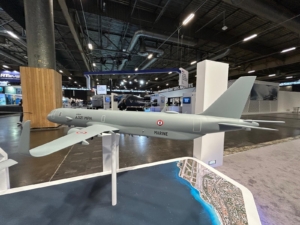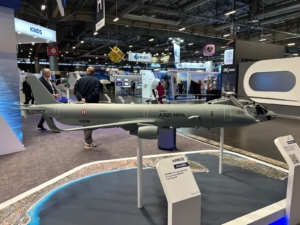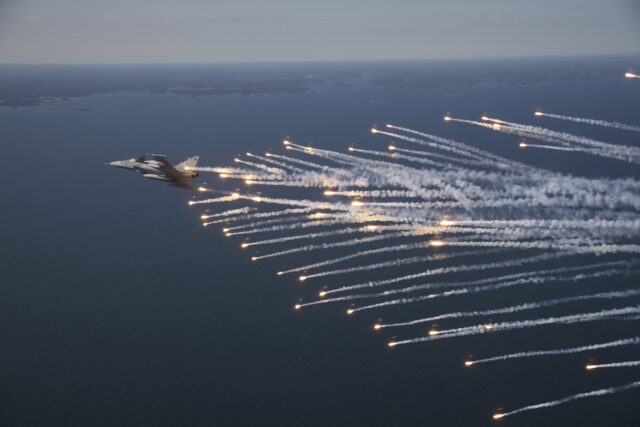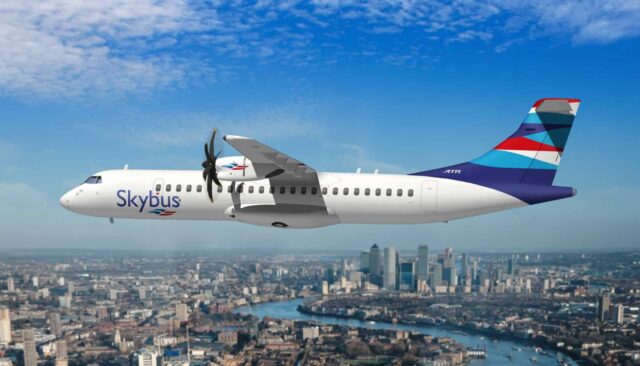Airbus Defense and Space unveils new A321XLR-based maritime patrol aircraft
November 7, 2024

At the Euronaval 2024 defence exhibition in Paris in early November, Airbus Defense and Space unveiled the A321MPA concept. The A321MPA is a maritime patrol aircraft concept based on the commercial A321XLR version of the A321neo family. The aircraft forms the basis of its proposal to the French Navy for the Dassault Atlantique 2 (ATL2) replacement programme (PATMAR Future).
Airbus has been developing the A321MPA concept under an 18-month study contract awarded by the French DGA (Direction Générale de l’Armement) defence procurement agency in early 2023. Airbus received one of two contracts, with the other being given to Dassault Aviation to study an MPA/ASW derivative of its Falcon X business jet.
A programme to replace the Marine Nationale’s turboprop-powered Dassault Atlantique 2s and Germany’s Lockheed P-3C Orions was originally launched on 23 October 2020, when the DGA launched feasibility studies for the Maritime Airborne Warfare System (MAWS) requirement. Some 18 of the 22 Navy’s Atlantique 2 aircraft were modernised with an AESA-equipped Searchmaster radar in place of the original Iguane, as well as a new Wescam MX-20D EO turret, and received new consoles and systems. By 2035 these aircraft will be between 40 and 45 years old.

Airbus Defense and Space offered a Maritime Patrol Aircraft (MPA) version of the A320neo, which it had soft-launched in February 2018, alongside Intelligence, Surveillance and Reconnaissance (ISR), and Airborne Early Warning and Control (AEW&C) variants.
The Franco-German MAWS programme collapsed in 2021, when Berlin ordered five Boeing P-8A Poseidons, citing Orion performance and reliability problems as a reason for pursuing a more urgent procurement. Three more P-8A aircraft were ordered following the Zeitenwende speech to the Bundestag by Chancellor Olaf Scholz, on 27 February 2022.
Following the collapse of the MAWS programme France launched a new national competition in February 2023. The aim was to replace the Atlantique 2 by 2035. Tenders were given to Airbus Defence and Space, which offered the A320Neo MPA before switching to the A321MPA, and to Dassault Aviation, who offered an MPA version of its new Falcon 10X, which Dassault claim to be the “heir to 50 years of Patmar and Surmar operations.”

Airbus hopes that the A321MPA could become a competitor to the P-8A Poseidon, which has taken much of the long-range maritime patrol aircraft market in recent years, though many believe that there is little remaining market for an aircraft in this class. Certainly the A321LRX offers many advantages over the Boeing 737-800ERX on which the P-8A is based. The commercial A321XLR has a range of 4,700 nm, and the MPA variant may have more fuel tankage.
Some believe that the A321MPA may lose out to the smaller, cheaper but longer range Falcon 10X, though the A321 offers more volume for operators, weapons and sonobuoys.
The new A321MPA will build on Airbus’ experience building the A330 MRTT tanker. The company has deliberately minimised modifications in order to keep costs low. The aircraft is to be fitted with large, optically flat observation windows behind the cockpit, comprehensive communications and datalink antennas, and an underfuselage EO turret. The main structural modification is a rear weapons bay in a new ventral gondola with ‘sliding doors’ located behind the wing. The longer fuselage of the A321XLR will enable this payload bay to significantly larger than would have been possible on the shorter A320.
Unlike the A320neo MPA, the A321MPA has no need for underwing weapons stations, carrying all of its weapons and stores internally. The aircraft will have a Thales sensor suite, and is fitted with a tail-mounted magnetic anomaly detector (MAD). Prominent fairings on the forward fuselage ‘cheeks’ may serve electronic support measures equipment, or may be associated with the new conformal radar arrays which Airbus say are distributed “around the aircraft,” which replace a traditional ‘rotating’ antenna array.
Airbus say that their study is finished, and that the company is now waiting a decision from the French MoD. The deadline for a decision is believed to be fast approaching.
















